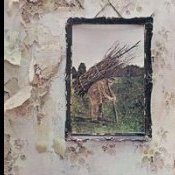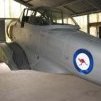MORE HANDBOOKS ARE ON THEIR WAY! We will let you know when they get here.
×
-
Posts
1,056 -
Joined
-
Last visited
Reputation Activity
-
 grsjax reacted to ESF in Finishing a silkspan sail
grsjax reacted to ESF in Finishing a silkspan sail
Bluejacket Shipcrafters have a short tutorial in their newsletter archives on using a three-layer silkspan set up for sails. I tried it for an awning and it worked well for me. https://myemail.constantcontact.com/News--tips--and-happenings-from-BlueJacket-Shipcrafters--Inc-.html?soid=1105166336677&aid=fVLCRI0uZ9o
Steve
-
 grsjax reacted to Charles Green in Brazilian Ebony
grsjax reacted to Charles Green in Brazilian Ebony
I'm not familiar with this wood - had to look it up. Brazilian Ebony, Swartiza tomentosa vs. the various species of "real" ebony, all from the genus Diospyros. So we are not talking about a variety of ebony, but something that resembles it. Very dark brown to nearly black with not so dark streaks. Newly cut wood is yellow/orange until it oxidizes to the dark color. It works well. Dust hazard was listed as unknown - don't take this to mean there isn't one; protect yourself.
The highest quality ebony will be solid black but will still have streaks/pockets of brown that will decrease the yield of solid black wood. You must protect your self from ebony dust. The oil in most most tropical hardwoods makes gluing problematic unless you wipe the surface to be glued with acetone just before the glue is applied.
-
 grsjax got a reaction from thibaultron in Brazilian Ebony
grsjax got a reaction from thibaultron in Brazilian Ebony
While visiting family in Oregon recently I stopped in at Woodcrafts of Portland. They had a bin of Brazilian Ebony on sale. Anyone ever used this wood?
Price was a fraction of Gabon Ebony. The wood is very hard, fine grained and black. Not as fine and black as true ebony but very close. It does have a visible grain when you look closely at it and the color is not as black as ebony. However after smoothing up a small piece and finishing it with a clear coat it looks good.
-
 grsjax got a reaction from JeffT in Brazilian Ebony
grsjax got a reaction from JeffT in Brazilian Ebony
While visiting family in Oregon recently I stopped in at Woodcrafts of Portland. They had a bin of Brazilian Ebony on sale. Anyone ever used this wood?
Price was a fraction of Gabon Ebony. The wood is very hard, fine grained and black. Not as fine and black as true ebony but very close. It does have a visible grain when you look closely at it and the color is not as black as ebony. However after smoothing up a small piece and finishing it with a clear coat it looks good.
-
 grsjax got a reaction from mtaylor in Brazilian Ebony
grsjax got a reaction from mtaylor in Brazilian Ebony
While visiting family in Oregon recently I stopped in at Woodcrafts of Portland. They had a bin of Brazilian Ebony on sale. Anyone ever used this wood?
Price was a fraction of Gabon Ebony. The wood is very hard, fine grained and black. Not as fine and black as true ebony but very close. It does have a visible grain when you look closely at it and the color is not as black as ebony. However after smoothing up a small piece and finishing it with a clear coat it looks good.
-
 grsjax reacted to Jim Rogers in Rotary tool recommendations, preferences
grsjax reacted to Jim Rogers in Rotary tool recommendations, preferences
I use a Dremel with Flex shaft and foot control and a rechargeable Dremel and needle files. I find you need all dependent on situation.
-
 grsjax reacted to Roger Pellett in Rotary tool recommendations, preferences
grsjax reacted to Roger Pellett in Rotary tool recommendations, preferences
I offer a contrary opinion. Since I enjoy sidetracking threads, this advice is worth exactly what you paid for it. 😜
Don’t buy a rotary tool! Instead buy a decent set of needle files. These rotary tools can be too aggressive when used on fragile materials. If used with any sort of heavy tool, the mass rotating at high speed begins to take charge. If you don’t have a light touch and a sure hand, you’re likely to wind up with a picture window instead of a porthole!
I have had a Sears Craftsman rotary tool that is 50 years old. It is great for use on metal but way too aggressive for use on thin wood. I recently bought a Proxxon pen sized engraver that is powered by a separate 12v power supply. With a small round point engraving tool, it works well on model scale materials.
Roger
-
 grsjax reacted to Jaager in Another Never Ever
grsjax reacted to Jaager in Another Never Ever
This is two generations after I started all this and I have no hands on experience with kits in this series, ( I did start with the old Model Shipways kits - yellow box - carved Basswood hulls.)
but if you have little or no experience with hardwood woodworking - especially at scale level - (plastic kits as a lead-in probably only helps with painting at scale - and given the kits that you express an interest in - there will be little to no painting with the wood) - you might consider a careful and sure footed entry into all this.
https://modelexpo-online.com/Model-Shipways-Lowell-Grand-Banks-Dory-with-Tools-124-Scale-Skill-Level-I-of-the-Shipwright-Learning-Series_p_3959.html
A boat is certainly not as sexy as a first rate or a cutter even - but even cutters had boats - understanding boats is a valuable skill/knowledge base and the actual work will give you enough of a taste to know if this is something that you really want to plunge into without investing a house payment.
Reading: For Beginners -- A Cautionary Tale would be time well spent.
-
 grsjax reacted to dragonflyxlii in Were can I get this clamping device
grsjax reacted to dragonflyxlii in Were can I get this clamping device
Hi All : pleas find attached pictures of several clamps that I made to deal with particular planking reaches.
-
 grsjax got a reaction from PeteB in New Workshop Bench Height ??
grsjax got a reaction from PeteB in New Workshop Bench Height ??
I am one of the height challenged at 5'7". I find a bench height of 30" works well for sitting and one 36" for standing. Your mileage may vary.
-
 grsjax got a reaction from RichardG in New Workshop Bench Height ??
grsjax got a reaction from RichardG in New Workshop Bench Height ??
I am one of the height challenged at 5'7". I find a bench height of 30" works well for sitting and one 36" for standing. Your mileage may vary.
-
 grsjax got a reaction from mtaylor in New Workshop Bench Height ??
grsjax got a reaction from mtaylor in New Workshop Bench Height ??
I am one of the height challenged at 5'7". I find a bench height of 30" works well for sitting and one 36" for standing. Your mileage may vary.
-
 grsjax reacted to RichardG in New Workshop Bench Height ??
grsjax reacted to RichardG in New Workshop Bench Height ??
I'm am height challenged at 5' 6" and am getting old and have back issues bending over a bench for any length of time 😀.
My garage already had 2 large fixed benches when we bought the house, so that was good. However as I move towards retirement, I am building new benches. My plan is to
Make a few small free standing benches (with storage underneath). This will allow for flexibility, especially when we move to a smaller home. Fairly low and not too deep. I'm expecting to sit while working a lot more. Build some "blocks" as needed to raise tools to a height that works - after using for a time. Buy a good height adjustable stool. I already built a small wheeled "cart" for my Byrnes saw, this enables me to move it out of the way when not needed. I will do the same for the thickness sander when it's purchased.
My 2 cents, especially since everyone's work area is so personal.
We do. Recommended reading "A Shed of One's Own" by Marcus Berkmann.
-
 grsjax reacted to SkiBee in Muscongus Bay Lobster Smack by SkiBee - FINISHED - Model Shipways - 1:24 Scale
grsjax reacted to SkiBee in Muscongus Bay Lobster Smack by SkiBee - FINISHED - Model Shipways - 1:24 Scale
Well, I’m finally done with the build. I have improved my skills and learned some additional things building this boat. Planking of the aft end is definitely a challenge for a beginner builder. I was very glad I had had the planking experience from building the MS 18th Century Long Boat.
Besides the issues that we all have had with this new kit, I will get on my soap box again, Model Shipways needs to add a more detail schematic of this boat to include one of how the rigging is laid out, such as the one with the Model Shipways 18th Century Long Boat. The Long Boat plans and instructions by Chuck Passaro are fantastic for a novice.
In regard to the rigging, I wish I would have done a single loop & knot on the lashings to make an eye in the rigging. I tried to do a double loop, like a double clove hitch, and it did not look good. Also, I like it with a much finer line to do the lashing.
Now on to my next build, I’m trying to decide between the Phantom New Your Pilot Boat, which is a solid hull, and the Armed Virginia Sloop, which is Plank on Bulkhead, both by Model Shipways. I have both and I had previous started the Phantom but shortly into shaping the solid hull, I determined that it had been miss-machined. Model Expo sent me a new hull and it looks better.
I’m still a little intimidated by finishing a solid hull, I’ve never been good a carving or shaping small wood. Even in Boy Scouts, I was terrible at whittling. I have to take care of some other work for the next two weeks so I have time to decide which I start first.
-
 grsjax got a reaction from Scottish Guy in For Beginners -- A Cautionary Tale
grsjax got a reaction from Scottish Guy in For Beginners -- A Cautionary Tale
You might want to back track a bit and get the Model shipways Lowell Dory Kit as a place to start. It is the first model in their Ship Wright series and guides you step by step thorough the process. The Norwegian Pram is the next in the series. It will take you further along the path to mastering wooden model building.
-
 grsjax got a reaction from ferretmary1 in For Beginners -- A Cautionary Tale
grsjax got a reaction from ferretmary1 in For Beginners -- A Cautionary Tale
You might want to back track a bit and get the Model shipways Lowell Dory Kit as a place to start. It is the first model in their Ship Wright series and guides you step by step thorough the process. The Norwegian Pram is the next in the series. It will take you further along the path to mastering wooden model building.
-
 grsjax reacted to bolin in Sloop from Roslagen by bolin - FINISHED - 1:50
grsjax reacted to bolin in Sloop from Roslagen by bolin - FINISHED - 1:50
The last piece added, the flag.
It's been a little over a year in the making, and now it is finished! My sloop from Roslagen.
It started in part as a project to hone my skills in clinker builds, to enable me to build the medieval long-ship. Along the way I have read a lot about these ships and as I learned more I have become more fascinated and interested. The research part of the build has definitely been one of the more rewarding aspects.
I also feel like I have learned a lot as a model builder during this project. Some of the choices I made early on would not be the same today. Primarily, I would not have made the hull from lime wood. I would have used something harder.
-
 grsjax got a reaction from Ryland Craze in For Beginners -- A Cautionary Tale
grsjax got a reaction from Ryland Craze in For Beginners -- A Cautionary Tale
You might want to back track a bit and get the Model shipways Lowell Dory Kit as a place to start. It is the first model in their Ship Wright series and guides you step by step thorough the process. The Norwegian Pram is the next in the series. It will take you further along the path to mastering wooden model building.
-
 grsjax got a reaction from mtaylor in For Beginners -- A Cautionary Tale
grsjax got a reaction from mtaylor in For Beginners -- A Cautionary Tale
You might want to back track a bit and get the Model shipways Lowell Dory Kit as a place to start. It is the first model in their Ship Wright series and guides you step by step thorough the process. The Norwegian Pram is the next in the series. It will take you further along the path to mastering wooden model building.
-
 grsjax reacted to Antyronnen in Skuldelev Wreck 3 (Viking knarr) by Antyronnen - Billing Boats - 1:20
grsjax reacted to Antyronnen in Skuldelev Wreck 3 (Viking knarr) by Antyronnen - Billing Boats - 1:20
The boat
This is one of 5 boats deliberately sunk in the mid 11th Century in the Roskilde channel in Denmark to serve as a defensive barrier protecting the upper reaches of the fjord near Skuldelev. The wrecks were numbered by the archaeologists excavating the find and this model is of Skuldelev wreck 3, which is one of the best preserved. The recovered boats are now housed in the Viking Ship Museum at Roskilde.
https://www.vikingeskibsmuseet.dk/en/
The kit
This the same kit I completed some 50 years ago. The story behind its subsequent demise is briefly told in my introductory post (Hello from Mid-Wales, 24th August 2021). The kit has been discontinued but I picked this one up on eBay.
As bought, all timber to build from the kit instructions is present, including sail material, rigging thread, wood stain in granule form, two sets of plans and a bag of small steel nails. I presume the latter are meant to be used to represent rivets although their use is not detailed anywhere and in my original build of this kit I used drawn bamboo pegs; the kit instructions says that treenails were used (up to date literature shows this is actually not the case for most strake to strake fixing) and they could be simulated by ‘marking this with a ball-pen’. I will have to return to the issue of rivets and roves later in the build. Having decided that I wanted to do it better this time round I turned to the available literature for information and advice.
Research
My original source in 1969 was an academic publication from 1967 describing the initial findings from the Roskilde wrecks and on which the Billing kit was obviously based. The more recent Billing kit ‘Roar Ege’ is based on the Roskilde Museum’s replica of Wreck 3.
In the past 50 years the literature on both the Roskilde find and research into Viking boat building methods has expanded phenomenally. The Viking Ship Museum in Roskilde is an amazing resource, not least their experience in building replicas and thereby researching construction methods and rigging. In 2002 much of this was consolidated into The Skuldelev Ships I, edited by Ole Crumlin-Pedersen; the Billing kit is 1/20th scale and many of the illustrations of the original find material in this book are at the same scale. Also of value has been McCarthy - Ships’ Fastenings, 2005, and, of course, the internet which abounds with illustrations of boats or replicas of such from the same era as the Roskilde find which are useful for deciding on how to build the stern section of the boat which was missing from the archeological find. Sailing into the Past, edited by Jenny Bennet, 2009, gave useful insights into construction but the stricture made by Toni Levine in her recent workshop, that replica construction has to meet current safety standards certainly appears to apply to the question of the frequency of rivet fixing in a clinker built hull of this period (mid-11th Century). It goes without saying that MSW is an invaluable source of information both regarding historical accuracy and building techniques.
First steps (in no particular order)
Build keel, construct planking jig, decide how to transfer strake outlines from printed 0.8-1 mm mahogany to 1.5 mm mahogany sheet.
I shall report back with the results.
-
 grsjax reacted to bruce d in Continental Army Vessels on Inland Waterways, 1775-1782
grsjax reacted to bruce d in Continental Army Vessels on Inland Waterways, 1775-1782
"The uses and conveniences of different kinds of Water Craft"
Continental Army Vessels on Inland Waterways, 1775-1782
by John U. Rees, 2001
The_uses_and_conveniences_of_different.pdf
EDIT: so there is no confusion, the status of this document is Open Access although it is not plainly stated in the text. The source is acemia.edu and this statement is on their home page:
"Open Access
Academia’s goal is to ensure that every paper, ever written, is on the internet, available for free. 22 million papers have been uploaded to Academia.edu. We think there are ~100 million papers ever written, so we are ~22% of the way there." Thanks go to Kurt for highlighting the lack of this information in the post. Wouldn't want it any other way. -
 grsjax reacted to rodgerdodger in Mary Byrne 1826 by rodgerdodger - Modellers Shipyard - Admiralty Model
grsjax reacted to rodgerdodger in Mary Byrne 1826 by rodgerdodger - Modellers Shipyard - Admiralty Model
Having built a total 14 ship models, I thought it was time to give modelling a rest. However, I saw the kit for the Mary Byrne Admiralty Model by Modellers Shipyard. I have always admired the admiralty models on display in nautical museums for their detail and the quality of workmanship by craftsmen who did not have the sophisticated equipment that we enjoy today. Plus an advantage of the admiralty model is that there is no detailed rigging and the emphasis is on the timber work. If I had looked more closely at the picture of the finished model I might have had second thoughts about buying it (more about that later) but I didn’t and bought it on impulse. Having bought it I had to make it!
First impression on opening the box is positive. Good quality looking materials and a comprehensive building manual in A3 size with photos of each stage, but no drawings (not that that should be a problem). The majority of components are in 5mm plywood. The deck planking is laser etched that is normally a negative but in this kit it is done very well with etched nailing and joint details etc.
The model is very small that should not have been a surprise as the dimensions were known when I bought it but being small it means lots of small fiddly components. Another challenge.
Having made a start assembling the very simple base, making the first frames and placing in position, a few issues have become evident at this early stage.
The plywood is 5 ply 5mm thick and it is a challenge to release and press out the laser cut components, especially when small. The components, especially the small ones, have to chiselled out carefully with an appropriate exacto blade.
Secondly the part numbers have been laser etched onto each piece. Although small the numbers are going to be unsightly in the finished model so would like to disguise them somehow, or maybe they will be lost in the background. Will wait and see.
The major issue however is the cleaning of the laser cut burn from each piece, as many of the edges will be exposed in the finished product. I am cleaning as much as I can each piece as I go (the Dremel is proving very useful) and plan a final clean at later stage. Even when you remove all the burn the plywood veneers are clearly visible – not a good look for an admiralty model. This is a blemish clearly evident in the finished model photo provided with the kit.
Will have to think about how to disguise the look of the plywood in the finished model.
The first stage is to build the frames forward of the central frame towards the bow. For the information of anybody who might use this log for their project I have come across the first problem with the instructions. Frame A is incorrectly illustrated (being a repeat of frame oXo) that had me bamboozled for a while.
A good feature of the kit is that fairing of the frames towards the bow is simplified with the fairing lines etched on to the frames. Easier than fairing the frames after installing them.
-
 grsjax reacted to bartley in Aliphatic Rapid Glue vs. CA and Tite Bond
grsjax reacted to bartley in Aliphatic Rapid Glue vs. CA and Tite Bond
For what its worth I have done a quick chemical analysis of Super Phatic. For those in the know I used Attenuated Total Reflectance Infrared Spectroscopy (like most exclusive clubs, we scientists invent this special language to keep out the rifraf!). This technique is quick (ten minutes). It cannot usually unequivocally identify a substance but can eliminate some possibilities.
So, It is not CA and it is not PVA. It looks like an acrylic modified with polystyrene. There are other techniques which could confirm this but not really worth spending my time on really.
John
-
 grsjax got a reaction from cajunrandy214 in The versatility of advanced laser cutting techniques...making rigging blocks, an experiment
grsjax got a reaction from cajunrandy214 in The versatility of advanced laser cutting techniques...making rigging blocks, an experiment
Lovely blocks. The char doesn't seem to be that bad and as you say a dip in stain or ink takes care of the problem.
-
 grsjax got a reaction from mtaylor in The versatility of advanced laser cutting techniques...making rigging blocks, an experiment
grsjax got a reaction from mtaylor in The versatility of advanced laser cutting techniques...making rigging blocks, an experiment
Lovely blocks. The char doesn't seem to be that bad and as you say a dip in stain or ink takes care of the problem.









